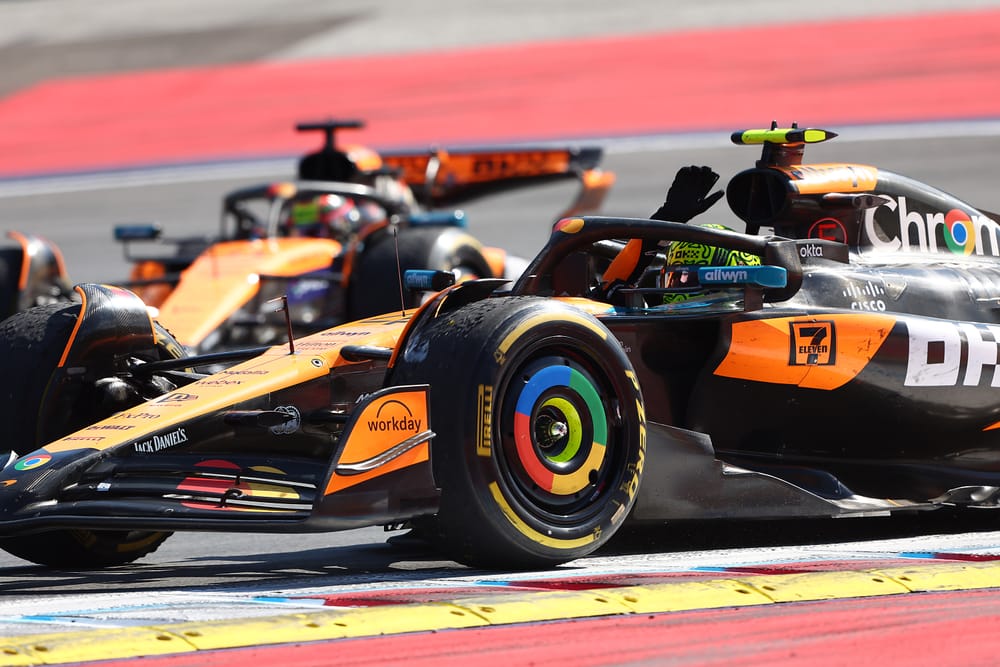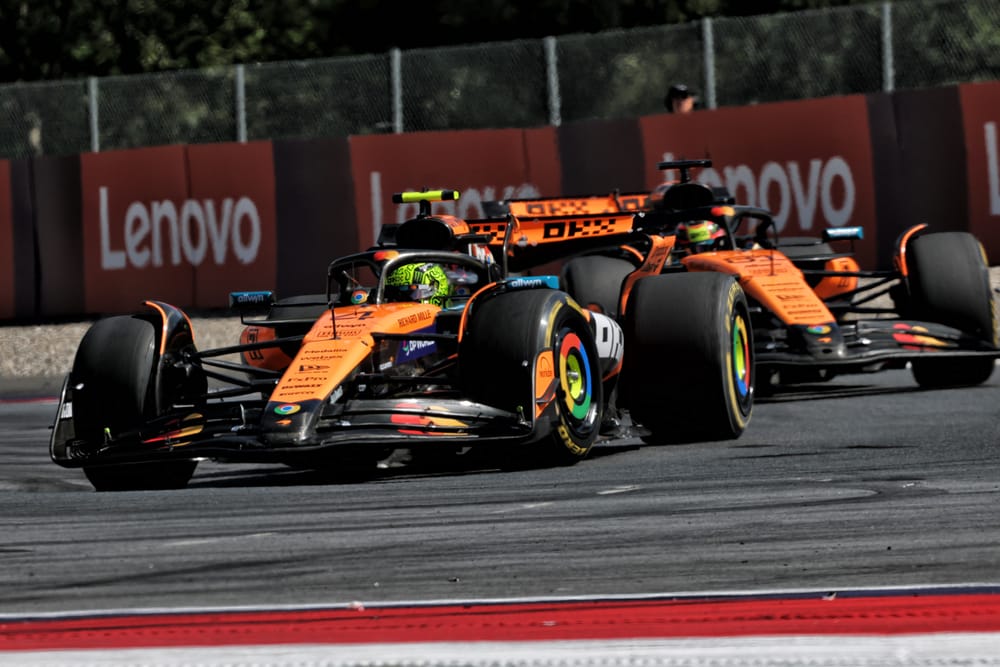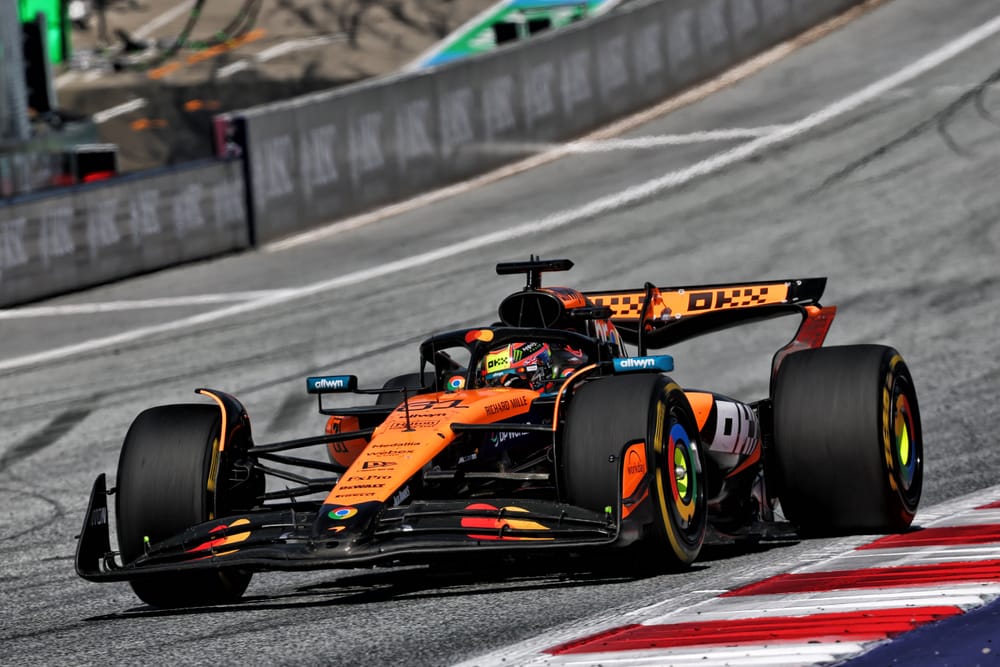Up Next

The rest of the Formula 1 teams were packing up their travel cases and equipment as McLaren was still holding celebratory photo sessions in front of its garage long after the Austrian Grand Prix ended, setting sun reflecting perfectly off papaya clothing and the extra-curricular spurts of champagne.
There was a lot to celebrate. Not only a team 1-2, but a level of dominance beyond anything seen in the season to date.
Lando Norris and Oscar Piastri were 20 seconds clear of third place by the end but their duel kept this race alive brilliantly well: a flat-out dice in the first stint of this two-stop race, stint two a Piastri recovery from a lock-up, and the final stint a super-tense game of pursuit through the lapped traffic, Norris always ahead but the gap narrowing with each lap - and with the advantage McLaren had this weekend, there was a lot of lapped traffic.
The pattern between the McLaren drivers went something like this:
Qualifying
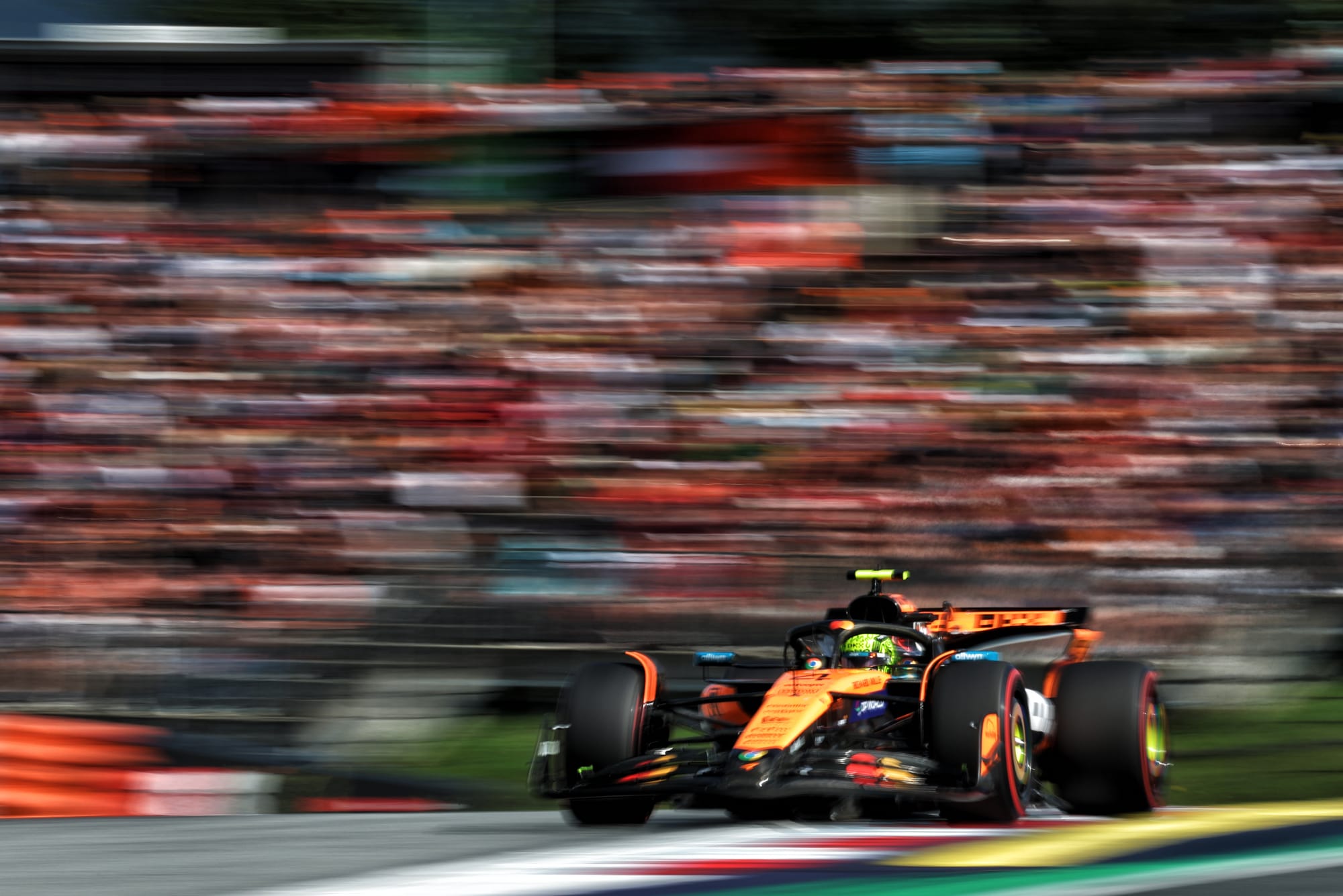
Norris was in an awesome groove around this place at which he always shines, at which the long corners allow his overlapping braking/cornering style to work spectacularly well. Helped also by the king pin angle tweaked suspension introduced at Montreal, which gave him more steering feel.
Piastri was never quite on his pace, even disregarding him not getting in his final Q3 lap because of yellow flags. There was more than a hint of 'I told you so' about Norris after by far the biggest pole margin of the season so far.
"It shows what I can do when I get what I need."
But the discipline of finding the most effective trade-off in speed and rear tyre degradation around this place of long corners and a near-50°C track surface temperature is very different to that of the ultimate qualifying lap. Especially with a team-mate hot in your DRS wake.
First stint
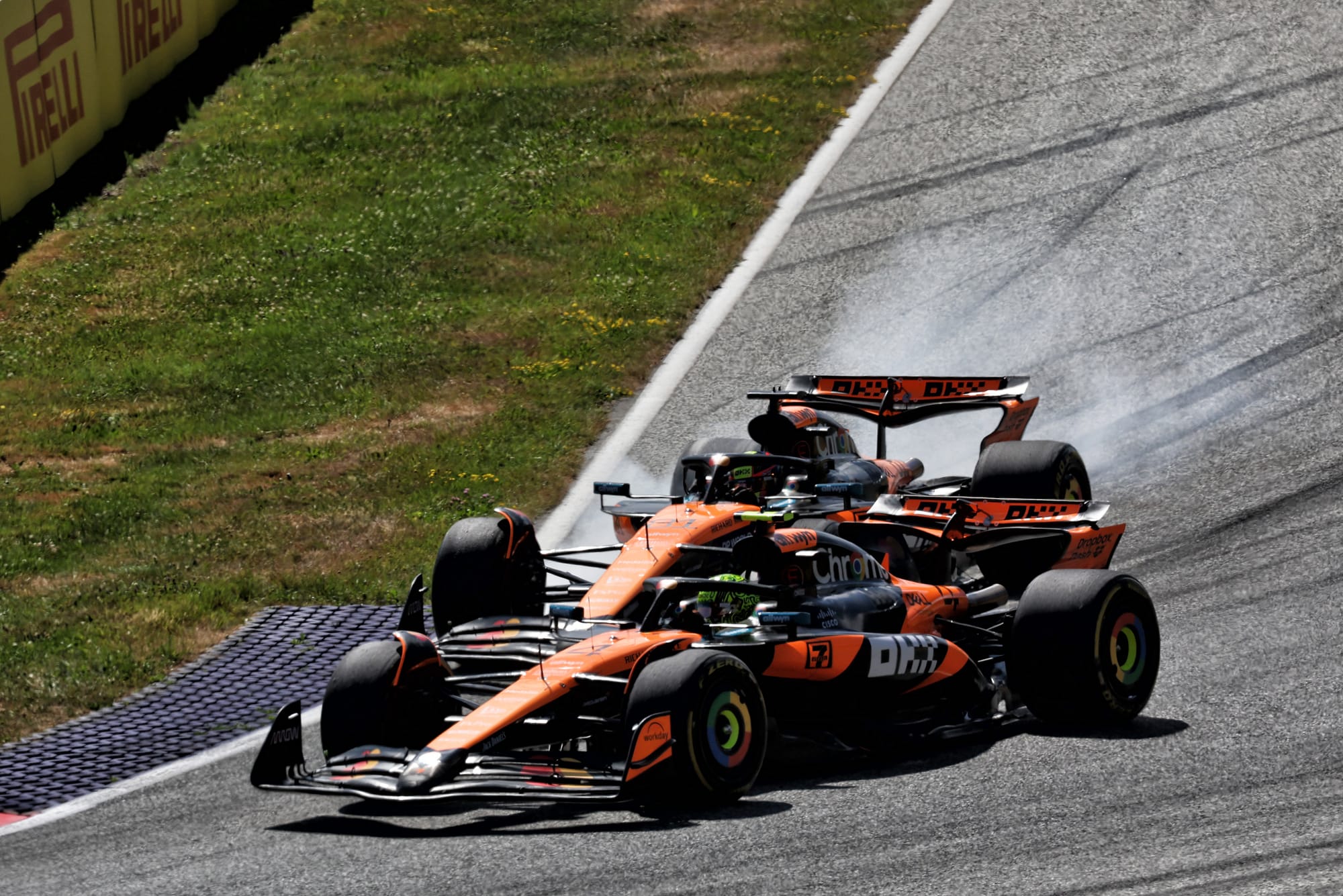
Piastri - demoted to third on the grid by the thwarted final qualifying lap - sorted out Charles Leclerc’s Ferrari at the first turn, pinning it to the inside and running fast around the outside. Fast enough to already be picking up Norris’s tow up to Turn 3.
So Norris was on a mission to break the DRS tow, Piastri was just as determined to go with him all the way and attack at regular intervals into Turns 3 and 4, even getting ahead into the Turn 3 hairpin at the top of the hill on one occasion, only for Norris to slip back ahead in the Turn 4 counter-move into the following downhill left.
With the powerful advantage here of DRS - forming a greater percentage of the lap distance than any other track on the calendar - Piastri didn’t need Norris’s raw speed to be able to race him.
He was close enough that he was able to use the DRS to force Norris to harvest his battery more through the middle sector in order to give him a defence into Turns 1, 3 and 4, the passing zones.
So he’d just sit there, always an attacking presence, forcing Norris to push harder than was comfortable, filling his brain with many conflicting switch change requirements while keeping a ready eye on the mirrors for an ambush.
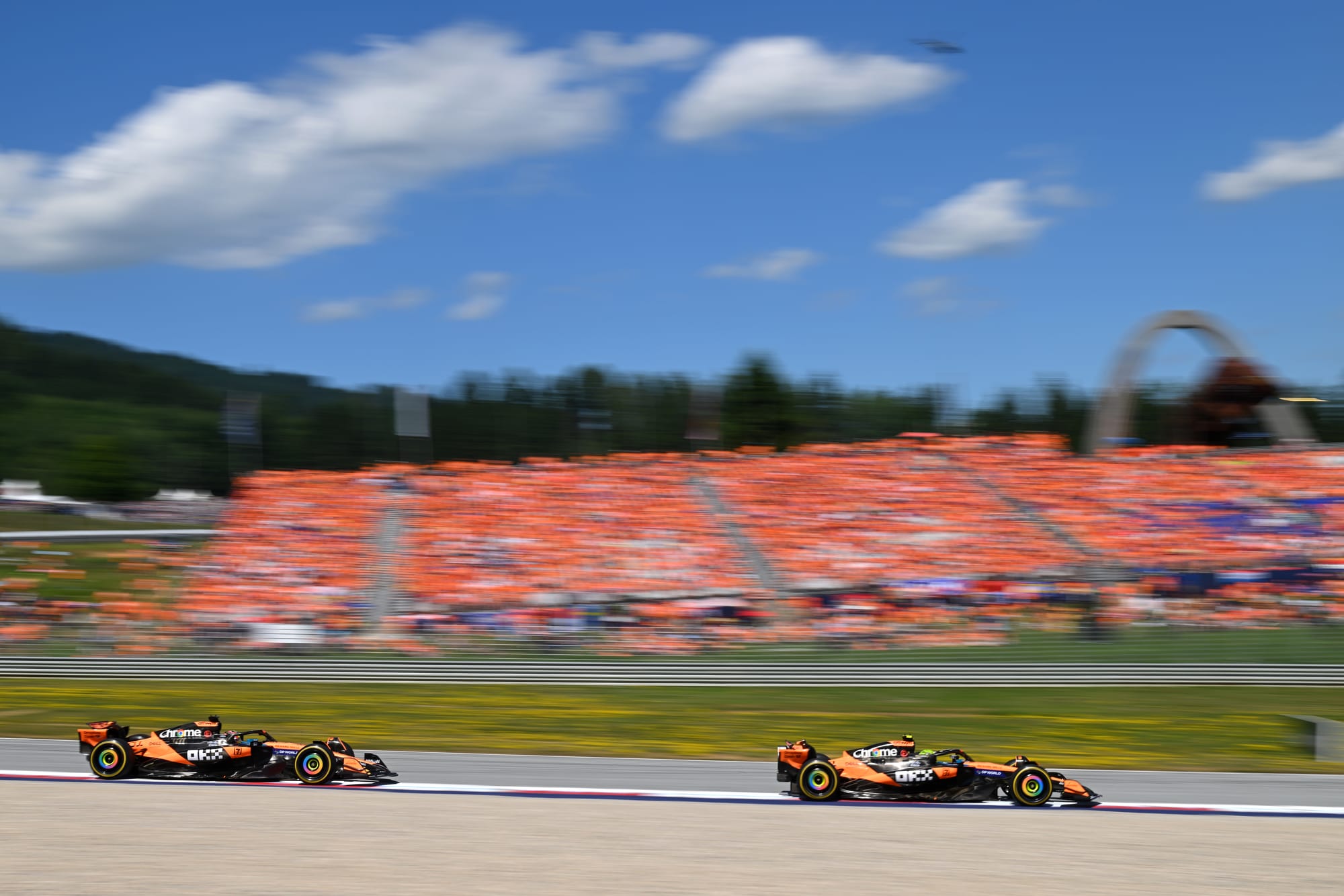
But even when being driven like that, the McLarens were keeping the tyres in better shape than anyone else’s and pulling steadily away from the two Ferraris behind.
Norris was just on the verge of finally breaking that 1s elastic gap when he ran wide at the final turn, kicking up the dust and taking slight damage to his front wing over the kerb. It was enough for Piastri to be right back upon him, but crucially not enough to get ahead.
On the 20th of the 70 laps - on the eve of the planned first pitstops and looking to get pit priority - Piastri tried for the ambush, playing it clever by not attacking into 3, giving Norris a false sense of security, then trying for a late dummying outside-to-inside dive bomb into Turn 4.
It didn’t work, Piastri locking up his rears and coming perilously close to contact. There was an admonishing message from on-high on the pitwall about that.
Second stint

More significantly, it had flat-spotted Piastri’s tyres. Norris and his engineer Will Joseph played it super-smart in this moment, reacting to Piastri’s problem by choosing to come in immediately for a set of new hard compound tyres.
This was really the winning one-two punch, even though the opponent still had plenty of assault left in him.
Doing this forced Piastri to stay out at least one extra lap on damaged tyres. But actually it ended up being even more advantageous for Norris than just that. Because the logical reaction to being jumped like that is to extend the stint and have a bigger tyre age offset into the next stint.
So that’s what Piastri did, for an extra four laps. It brought him out 6s behind but with tyres four laps newer, which should theoretically have given him a 0.2s per lap advantage.
Piastri spent this stint closing this gap down, but had only halved his deficit by the time of the second stops. That’s how good Norris was on the hard tyre.
Stint three
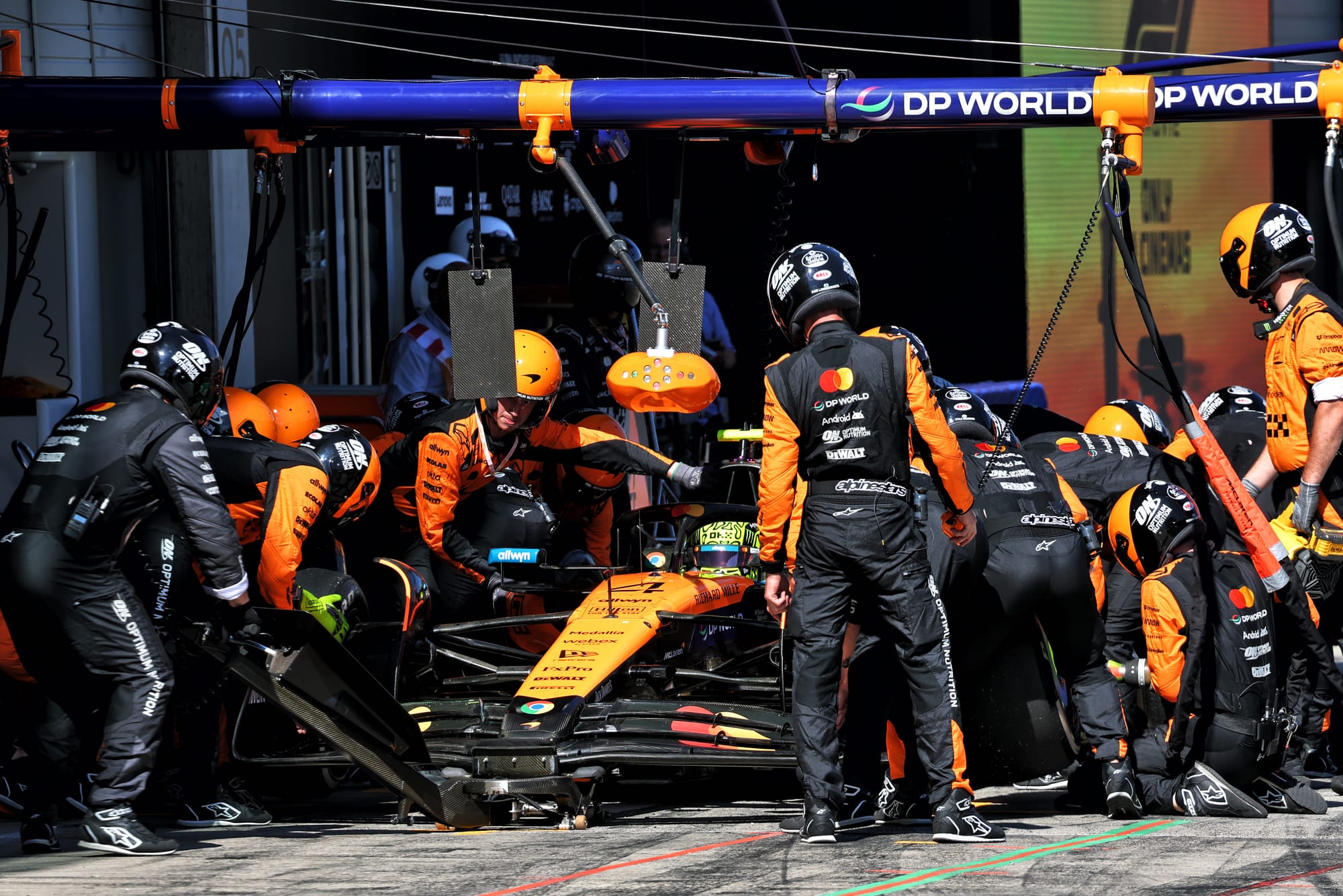
This was when the dice reignited, with each of them back on the same age medium tyre, scything through the backmarkers.
Norris desperately wanting Piastri nowhere near his DRS range, Piastri trying for all he was worth to get back there, to return to where he’d been before the fateful Turn 4 lock-up.
With nine laps to go the gap was down to just 1.6s, but thereafter Norris had it under control. It could have gone wrong at any time, just one wrong-footed way around a dicing lapped car. But actually it was Piastri who suffered this – as an inattentive Franco Colapinto drove him onto the grass between Turns 3-4.
That was how Norris prevailed over Piastri as they drove by far the fastest car on track. It was all rooted in his greater intrinsic pace.
Why the enhanced advantage?

Well, most obviously of all there was no Max Verstappen. Competitively, he was taken out of the picture by the yellow flags for Pierre Gasly’s spin in Q3, something which put the world champion seventh on the grid rather than second or third - as looked likely.
Then, materially, he wasn’t there within a few seconds of the race starting, an innocent victim of a Kimi Antonelli loss of control into Turn 3 on the opening lap.
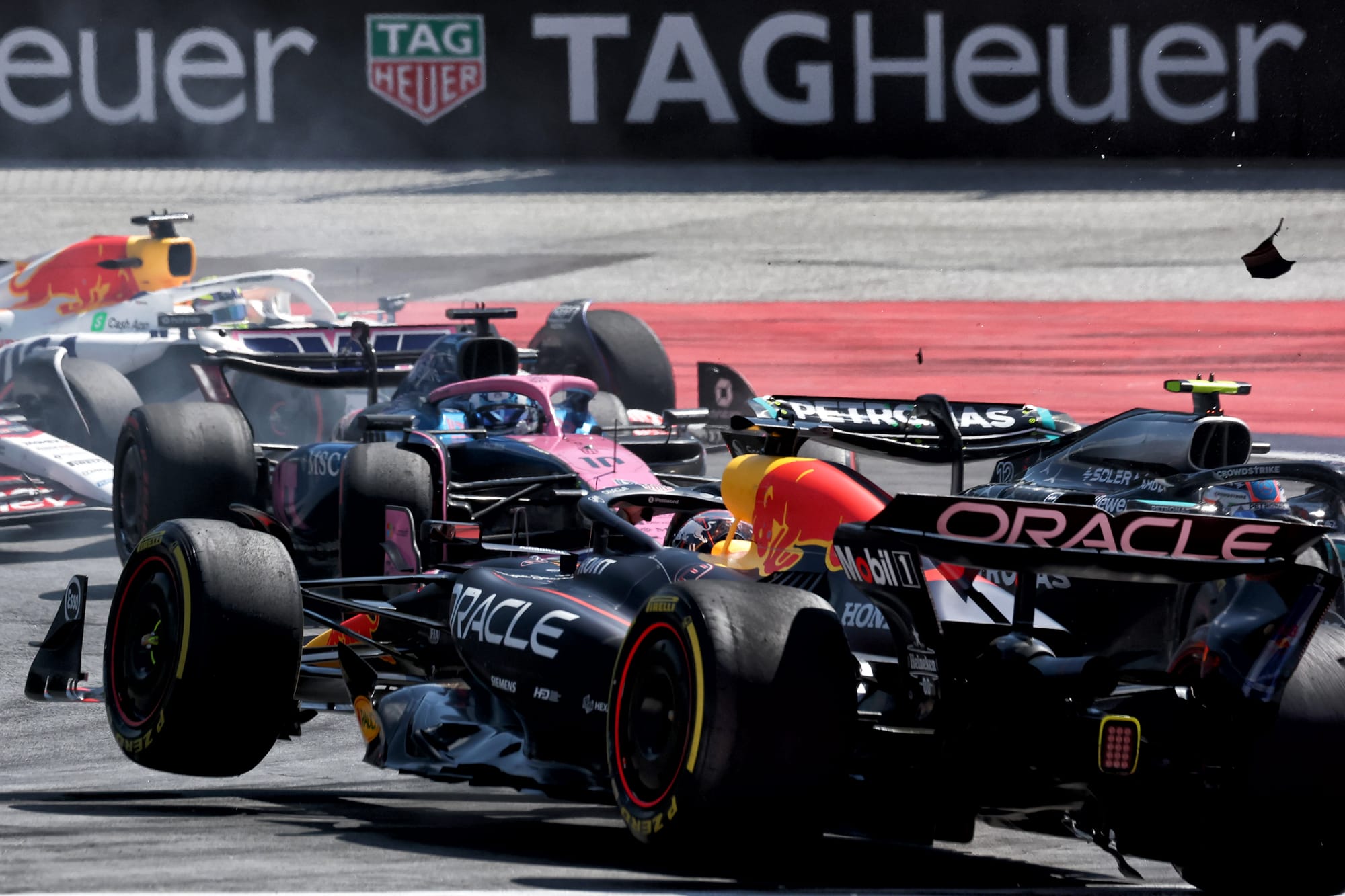
Then Mercedes - the winning car in Montreal - was absolutely nowhere, unable to control its rear tyre temperatures adequately and going even further in the wrong direction with a set up experiment. That left George Russell a minute off the lead, in fifth, 40s behind Leclerc, half a minute behind Lewis Hamilton.
That left just Ferrari - which was OK, maybe even improved, with its all-new floor. But still troubled by a marginal plank wear, so much so that Leclerc was being instructed to lift and coast ‘at every corner’ from as early as lap 15.
But secondly, there was the McLaren itself. It loves long corners, it loves - relative to the opposition - hot tracks. Then there were its upgrades: a new aero pack around the front and a new rear suspension geometry for greater high-speed corner entry. Combined, it put this team in a different league.


